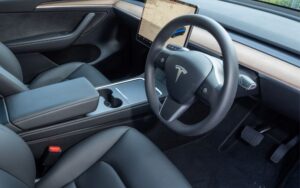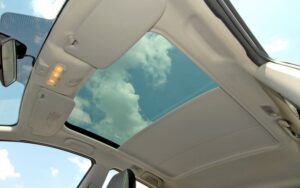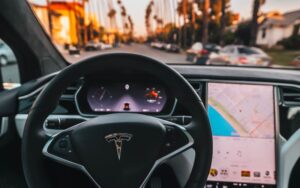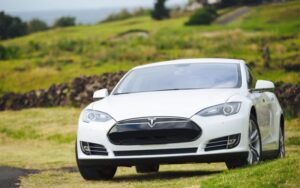Tesla OBD Port: All You Need To Know
Different car makers are turning cars they make into data banks. Hence, you can access a lot of data from your cars and understand how they work.
Retrieving data from your car is crucial because you will have better control over them. One of these features on a vehicle is its onboard diagnostics.
This is one characteristic of a Tesla. So, learning the location of your car’s OBD port is essential. Hence, where can you find Tesla’s OBD port?
The location of your OBD port on your Tesla depends on the Tesla model. If you’re using the older versions of Tesla, like the Models S and X, your OBD port is under your car’s dash. However, the location for newer models is different. Also, the Tesla Models 3 and Y have a Diagnostic port instead of an OBD port.
You must wonder why Tesla replaced the OBD port with a Diagnostic Port. If that’s the case, keep reading this article to know the reason for the change.
Additionally, depending on your Tesla model, you will learn why your car has an OBD or Diagnostic port.
Do Teslas Come Standard with OBD Ports?
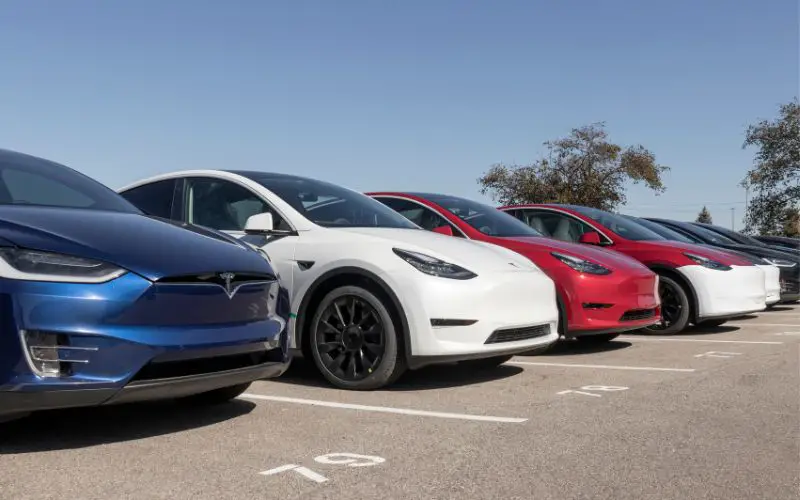
Yes and no. Older models of Tesla cars like the Models S and X come with OBD ports, while newer versions like Model 3 and Y come with Diagnostic ports.
Before we delve deeper, you should know the meaning of OBD. OBD is an acronym for “On Board Diagnostics.”
Every older version of the Tesla car has standard OBD ports under the dash. An OBD port is essential to your car because it helps you pick up faults before your car breaks down.
To understand how OBD ports work, imagine you have a machine that alerts you when it wants to break down.
An OBD port performs that function for you. It helps you detect faults and where they are coming from before they become an issue.
Hence, you can repair your car and save a trip to the mechanic, where you will spend money.
Additionally, it is standard for all cars to come with OBD ports or a variation, like Diagnostic ports. Emission test centers use these ports to check the emissions from your car.
Emission test centers ensure the emission from each car complies with global emission standards. However, Teslas do not need emission checks since they are electric.
Hence, checks by emission centers aren’t relevant to Tesla cars.
Where Are OBD Ports in Tesla Models? (Identity for All Models)
If you read the previous section, you should know the location of OBD ports. But don’t worry if you’ve forgotten.
You can find the OBD port on Model S and X under your car’s dashboard, directly below your touchscreen.
On the other hand, you can find the Diagnostics port at the base of your center console in the back seat.
Is OBD Good for Electric Vehicles?
Yes. Without OBD ports, you or your mechanics won’t be able to tell what’s wrong with your car if it breaks down.
Since Teslas are all-electric, mechanics can’t use conventional methods to fix your car. Even the best mechanics need OBD ports to know what’s wrong with your car.
For instance, when you go to a hospital, they take your blood to run tests. Think of OBD ports as your car’s blood.
And scanners read your car’s OBD port to tell you what’s wrong with it. However, the initial use of OBD ports is obsolete with EVs.
Hence, Tesla developed their type of OBD port, the Diagnostics port.
Can You Use OBD Scanners for Tesla?
Yes. You can scan your Tesla’s data using OBD scanners. There are a lot of electronic control units in your Tesla.
Hence, if you have a problem with any unit of your car, a standard OBD scanner will pick it up and relay that information to you.
However, since a Tesla Model 3 and Y don’t have a standard OBD port, you must get a diagnostic cable.
Tesla users have been complaining about hacks in the Tesla software that compromise their data. Additionally, when the Model S and X were popular, Tesla didn’t appreciate emission test centers checking their cars.
Tesla also pointed out security concerns which indicate that the software on previous models is susceptible to hacks.
However, Tesla rectified that issue with the Diagnostic port. You don’t have to worry about the Diagnostic port because Tesla upgraded the security system.
You can’t access the car’s base code. Instead, you only have access to live data from the vehicle.
Additionally, the upgrade in Tesla’s security makes it near impossible for someone to hack your car’s critical functionalities.
The Diagnostic port only allows you to view a specific range of data.
Some of the data you have access to using your Diagnostic port include:
- Battery power, voltage, temperature, and capacity.
- Drive Unit, electric power, RPM, and torque.
- Mileage
- Charging efficiency
- HVAC controls and readings
OBD Ports Vs. Diagnostic Ports; Which Is Better?
It depends on how you look at it. The car community has been using OBD ports for a long time. It is standard for each car to come with an OBD port.
However, Tesla didn’t see the relevance of these ports and switched them with their technology.
Hence, if it concerns Tesla, Diagnostics ports are better because it is Tesla-specific.
We have included this table to help you understand why Diagnostic ports are better for Tesla cars.
| OBD Port | Diagnostic Port |
|---|---|
| You will get fewer data | You will get everything you need to fix your Tesla |
| Security issues | Provides read-only data |
Which OBD Scanner is Best for Tesla?
Nothing is more important than the right tools for your vehicle repairs. The only way to fix your Tesla’s issues is with an OBD scanner. Hence, you must get the best scanner on the market.
You don’t want an OBD scanner that will point you in the wrong direction and waste your time and efforts.
Hence, we’ve compiled a list of the four best OBD scanners on the market.
If you’re not a fan of the OBD scanners above, you can always get your OBD scanner. However, you need to know what to look for in an OBD scanner.
Hence, below are some critical areas you should use to vet your ideal OBD scanner:
#1. Display
Some OBD scanners only display error codes, while others detail the code’s meaning. Hence, you should ensure your ideal scanner gives you detailed information.
However, some scanners connect to your phone and use your phone as its display.
#2. Connectivity
Wireless scanners are becoming increasingly popular on the market. Using a wireless scanner, you don’t have to be close to your Tesla before you pick up information.
You can do something else in another area of your house while getting data off your Tesla.
#3. Cost
Some scanners are unnecessarily costly while they perform the same function as regular scanners.
Hence, analyzing every scanner to ensure you’re getting value for your money before purchasing it would be best.

Hey, I’m Michael Davis, a 35-year-old with a degree and a love for cars and tech. Since I was a kid, cars have been my thing—so much that I even thought they ran on magic beans! Fast forward, and I’ve built Vehicle Army, your one-stop-shop for easy-to-understand car facts.

